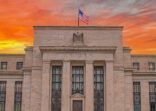Investors probably still have the fresh memory of what happened last May when former US Federal Reserve Chairman Ben Bernanke indicated that the Fed might start to taper QE soon. The news stopped the advance of equities worldwide, sent long-term interest rates higher, and triggered a bout of volatility.
Emerging markets were hammered, especially those with large current account deficits, greater dependence on external finance, and weak public finances. For example, the Indian market saw significant capital outflow, sharp currency depreciation, and increasing market volatility during that period.
Although QE tapering and rate hiking are two separate issues, the implication to the markets is similar, namely rising interest rates, tightening capital funding, capital outflow from emerging economies, and currency instability.
All of these will have a much worse impact on economies with large current account deficits, high external borrowing relative to reserves, high inflation, and deterioration in economic fundamentals.
This is evidenced in the data shown in Figure 1 and Figure 2. Indonesia and India have the worst current account deficits in 2013, a major reason they are included in the “Fragile Five” (see figure 1). Figure 2 shows the respective market equity index returns for two periods of 2013. One is before the Fed hint on QE tapering and the other one is from May through the end of 2013.
Interestingly, the Indonesia equity market posted a loss of 16.8% from May 1 to the end of 2013 and gave up all the gain in the first four months. The India equity market surprisingly had a positive return from May to the end of December 2013. This could be explained by the fact that the India central bank stepped in very aggressively to dent sharp currency depreciation and stabilise the market.
However, the impact of tapering concerns extended even to economies with relatively better fundamentals. For example, the Philippines, which had better growth prospects and public finances, took hard hits to its currency, equity market and bond yields. Its equity market lost 13.4% within eight months.
Figure 1: Current Account Balance (% of GDP)

Source: Bloomberg, IMF World Economic Outlook, April 2014
Figure 2: Asian Markets Equity Index Returns (% local currency)

Source: Morningstar Direct
Although history will unlikely repeat itself, history can be a good indicator of the future. The more relevant analysis is to examine how each Asian equity market responded to the Fed rate hike in the past. There were three major periods of monetary tightening and rising interest rates that occurred over the last 20 years (see Figure 3):
Period 1: January 1994 to February 1995, the Fed hiked the rate seven times over 12 months, from 3% to 6%, with an average increase per hike of over 40 basis points.
Period 2: October 1998 to May 2000, the Fed hiked the rate six times over 19 months, from 4.75% to 6.5%, with average increase of 30 bps.
Period 3: June 2003 to June 2006, the Fed hiked the rate 17 times over 24 months, from 1.00% to 5.25%, with average increase of 25 bps per hike.
Figure 3: Rising Rate Periods Over the Last 20 Years

Think back to 1994. The Fed had kept rates at the low level of 3% for three years in an effort to allow the financial sector to recover from the savings-and- loan crisis. The Fed surprised the market by beginning to tighten monetary policy and hiking the rate very quickly throughout the year.
Many investors were caught off-guard. The bond market had its worst year since the late 1920s. That period of rate hiking had the worst effect on the U.S. bond market compared to the other two, during which the Fed took more measured paces. The impact was more pronounced on Asian equity markets than that of the U.S.
As data show in Figure 4, most Asian equity markets experienced sharp losses during Period 1 (January 1994 – February 1995) except Korea, Taiwan, and India, which ended in the slightly positive territory. During periods 2 and 3, none of the Asian equity markets experienced the same decline. In fact, all markets performed very well.
Figure 4: Asian Market Equity Index Returns During 3 U.S. Rising Rate Periods (Annualized % Local Currency)

Source: Morningstar Direct
When interest rates are raised, it indicates that the economy is accelerating out of a slow-growth environment. It signals that the US and global economies are on a strong footing, which could renew confidence in the markets and give equity investors the opportunity to capture additional gains. Sustainable recovery of the US economy will also benefit Asian exporters, such as Japan, Vietnam, India, Philippines and China.
As the historical data suggest, a small, measured, and economic data-dependent rate hike by the Fed that have been previously telegraphed would not have a significant impact on Asian markets. Since the Fed started QE tapering last September, the potential rate hike has been one of the most anticipated moves and has likely already been priced into the markets.
















